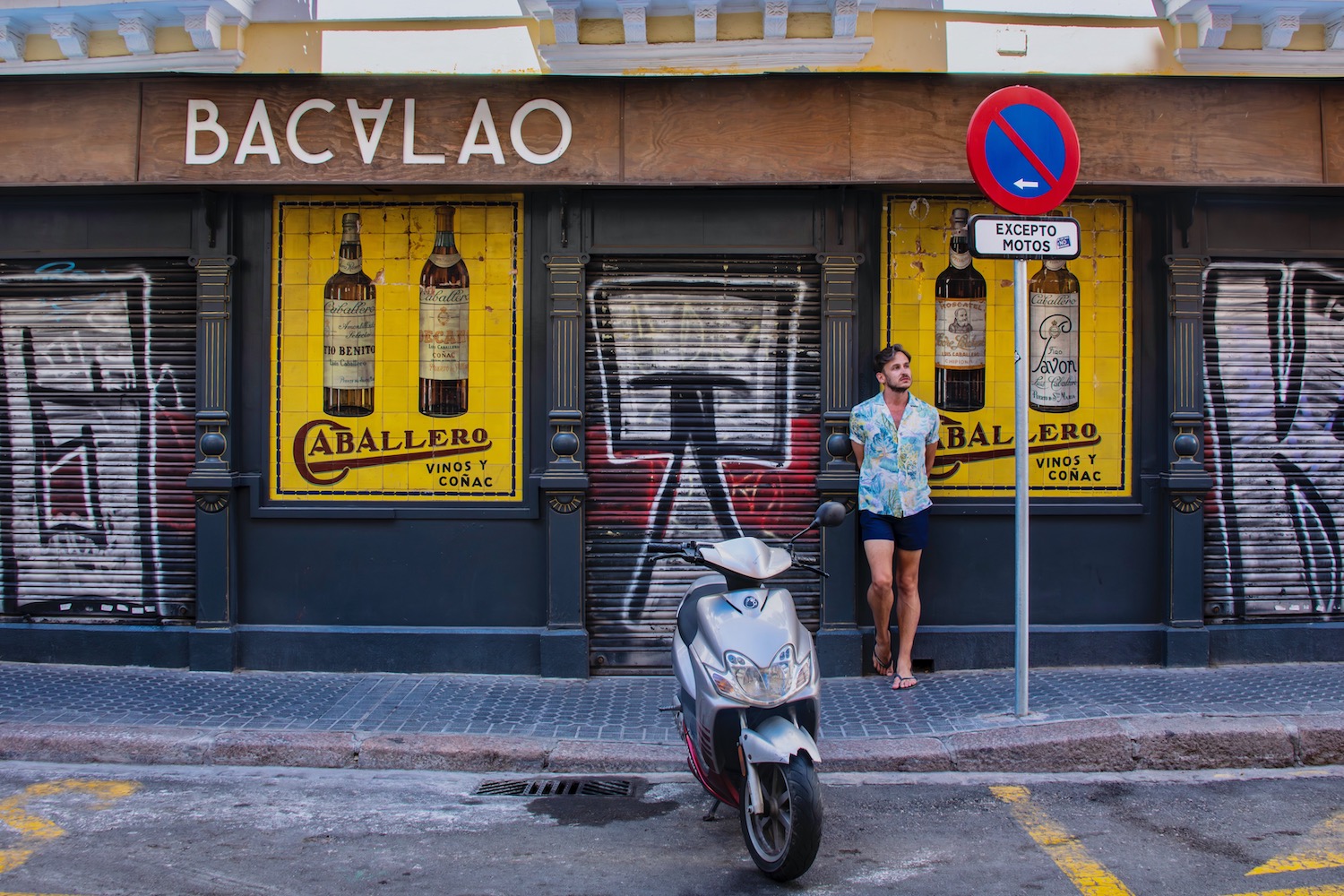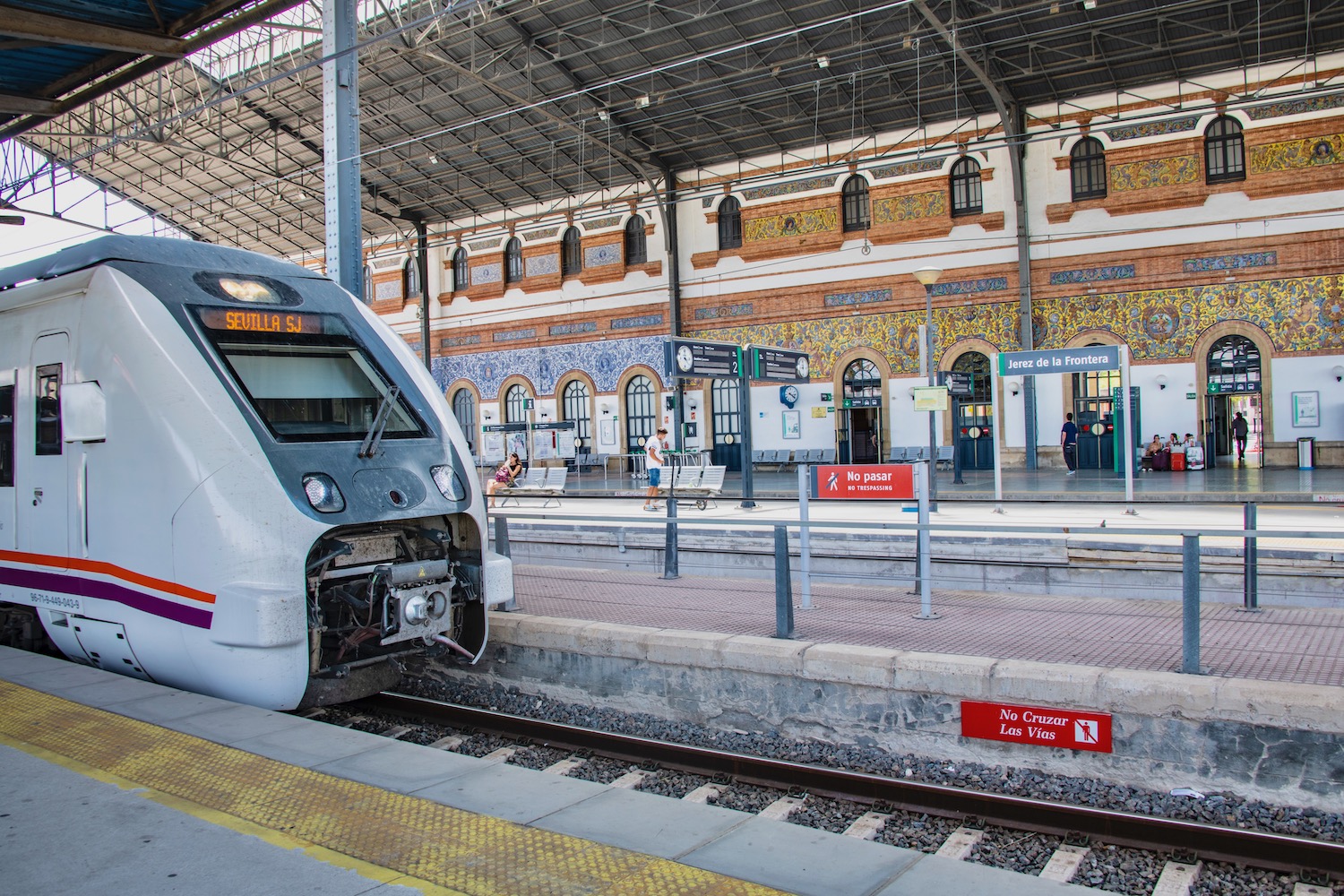If you haven’t extensively traveled in Spain, then you might not see why a dedicated Spain train guide would necessary. After all, most European countries have large train networks; most are extremely straightforward to use.
While Spain’s trains are pretty easy to understand once you’ve been in the country a while, some things about riding the country’s rails are less obvious. Many travelers come to the conclusion that it’s best to browse and book trains online, rather than the more spontaneous approach that tends to suffice in much of the rest of Europe—I’ll explain why in a few paragraphs.
No matter how well you eventually come to know the Spanish rail network, I think the information I’m about to share with you will be valuable. Certainly, it should inspire you to book your trip to Spain, if you’re still on the fence about visiting!
A Fascinating Fact About Spanish Trains
When it comes to high-speed trains in Spain, the country is second-to-none. Well, one: China. Yes, apart from China, Spain has the second-longest high-speed rail network in the world, with more than 2,000 miles of track. These trains mostly travel from Madrid’s two train stations to domestic destinations north and south of the capital, though some continue across the border into France, as part of the partnership between Renfe (the national Spanish train operator) and SNCF.
In addition to high-speed Spanish trains, whose sub-types I’ll be delineating in the next section, there are plenty of local and limited express trains in Spain. These go from larger cities like Madrid and Barcelona to smaller cities in town; some travel along the same routes at high-speed trains, just a bit slower and at a much lower cost. With few exceptions, you can get between almost every two points in Spain using some kind of train.

Types of Trains in Spain
AVE
AVE trains are Spain’s flagship high-speed trains, and travel between Madrid’s Puerta de Atocha station and major cities south of the capital, such as Barcelona and Seville. Note that while AVE is the best-known category of high-speed trains, they aren’t the only ones.
AVANT/Alvia and AVLO
A second tier of high-speed Spanish trains are the AVANT/Alvia and AVLO ones. AVANT/Alvia trains primarily travel between Madrid’s Chamartin station and northern cities such as A Coruña and Bilbao, while AVLO trains travel along the same routes as AVE trains, but are slower and cheaper, hence the “lo.”
Ordinary Renfe trains
While Spain’s high-speed rail network is encompassing and convenient, it isn’t always the best option. Certain cities are only served by ordinary Renfe trains, while in other case a slower local or limited express train makes more sense because of schedule or price.
Cercanías suburban trains
The simplest type of trains in Spain are urban and suburban commuter services known as Cercanías. Operating from many major cities, these local routes travel from main city-center stations to suburbs and exurbs, and serve primarily to bring workers and students into city centers from more provincial areas.
Foreign trains
There are times—for example, when riding a high-speed train traveling to or from Barcelona—that you may notice your carriage has a French TGV logo on it. That’s because certain foreign trains operation international services to and from Spain. Likewise, certain Spanish AVE trains sometimes cross the Spanish border.
Do I Need a Spain Rail Pass?
Unlike the Japan Rail Pass, the Eurail Pass and its country-specific sub-passes don’t always provides a clear value proposition. They limit you to using a certain number of trains over a certain number of days, for a price that really should allow for unlimited use. Unless you plan to travel on a high-speed train on every day of your trip to Spain, it generally doesn’t make sense to buy a rail pass.
Indeed, this is not just because Spain trains tend not to be extremely expensive, although that’s part of it. Rather, unlike in Japan and certain other countries, the use of European rail passes entails a lot of bureaucracy—it’s not a matter of flashing your pass and being good to go. Given that you’re unlikely to save money, but will also need to endure a great deal of stress, I don’t think a Spain rail pass is really worth it.

Other FAQ About Trains in Spain
Are trains good in Spain?
Trains in Spain are generally very high-quality, particularly the high-speed ones that travel between large cities. Overall, I’d say Spanish trains are comparable to French ones; are a bit nicer and faster than German or Swiss ones; and are not quite as nice as the newer Italian ones.
Are trains in Spain expensive?
Trains in Spain are fairly-priced, in my opinion. You’ll rarely pay more than €100 for a one-way ticket; traveling between cities by train is almost always cheaper than doing so by plane, and when you account for travel time at both ends, is similarly efficient.
What kind of trains do they have in Spain?
Spain has a variety of trains, from high-speed intercity trains, to urban and suburban commuter trains, to subways within cities. You can travel between almost any two points in Spain by train; even if you don’t aim primarily to explore Spain by train, it’s difficult to take a trip there without availing the country’s rail network.
The Bottom Line
I hope you’ll come to consider this Spain train guide your one-stop shop for riding the Spanish rails. Spain’s train network surprises people, both because of its size and scope (it’s second only to China’s in this regard), as well as how crowded every train tends to be, in spite of there being so many of them. Regardless of how extensively you travel Spain, the country’s trains will be indispensable to getting around, and will provide you with smooth passage, so long as you do a little bit of homework before you land in Madrid or Barcelona. Want to make sure your next trip to Spain is one for the record books? Hire me as your Travel Coach, and let me sweat the details.







